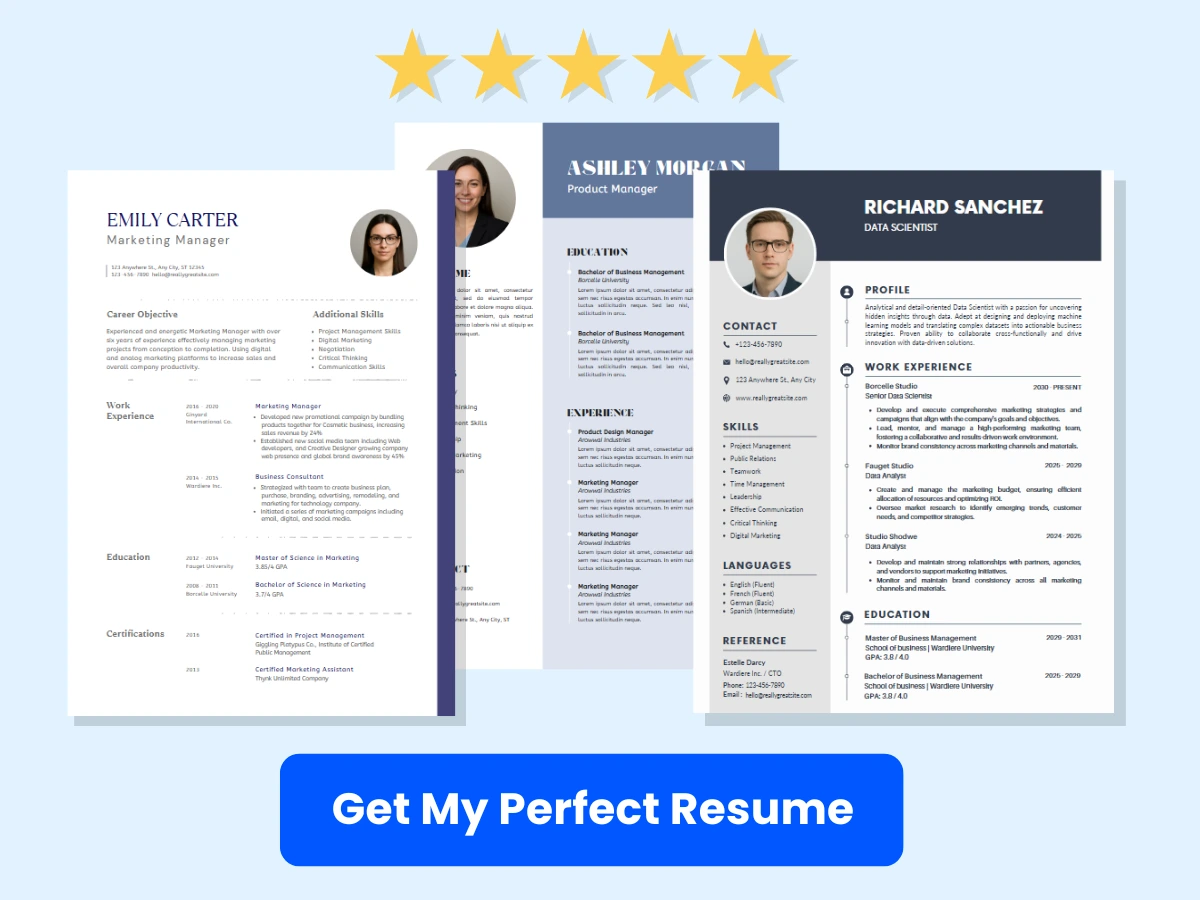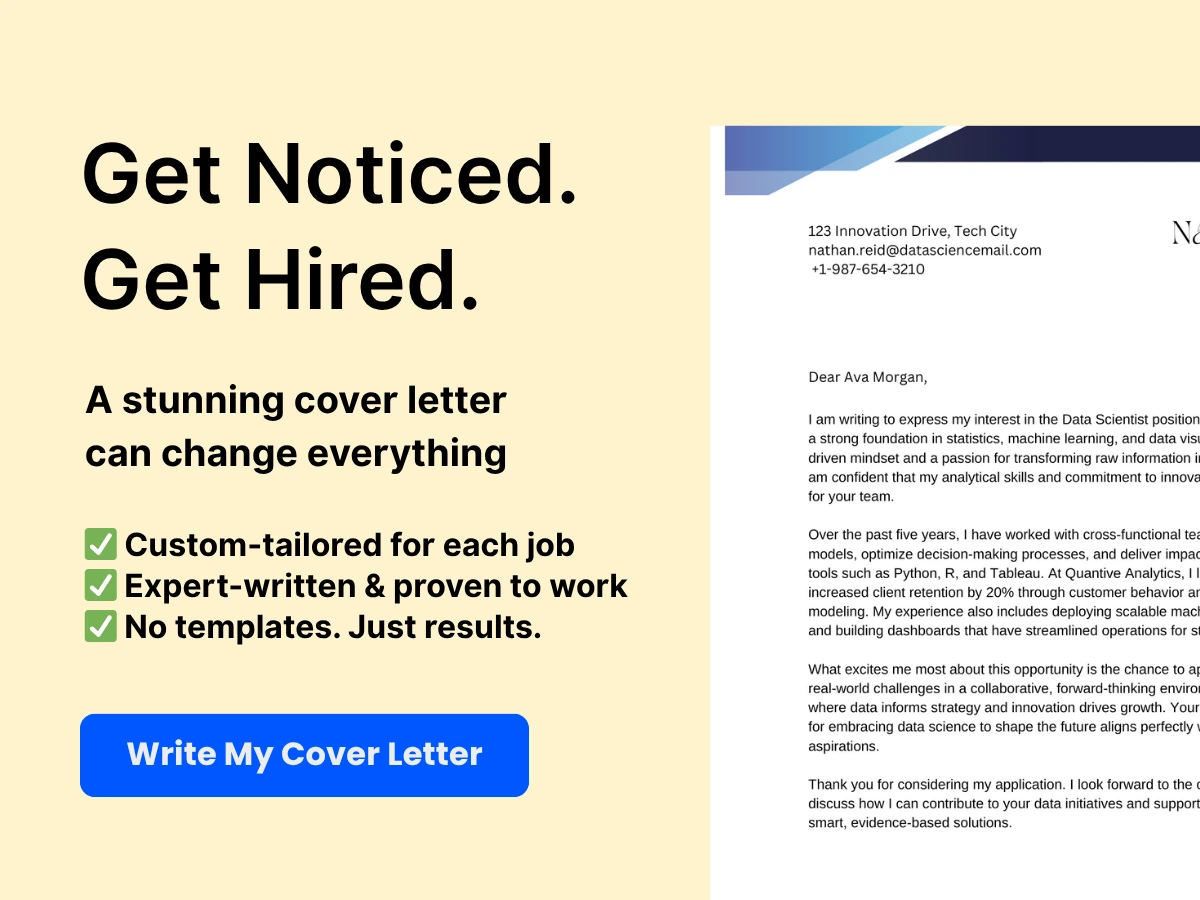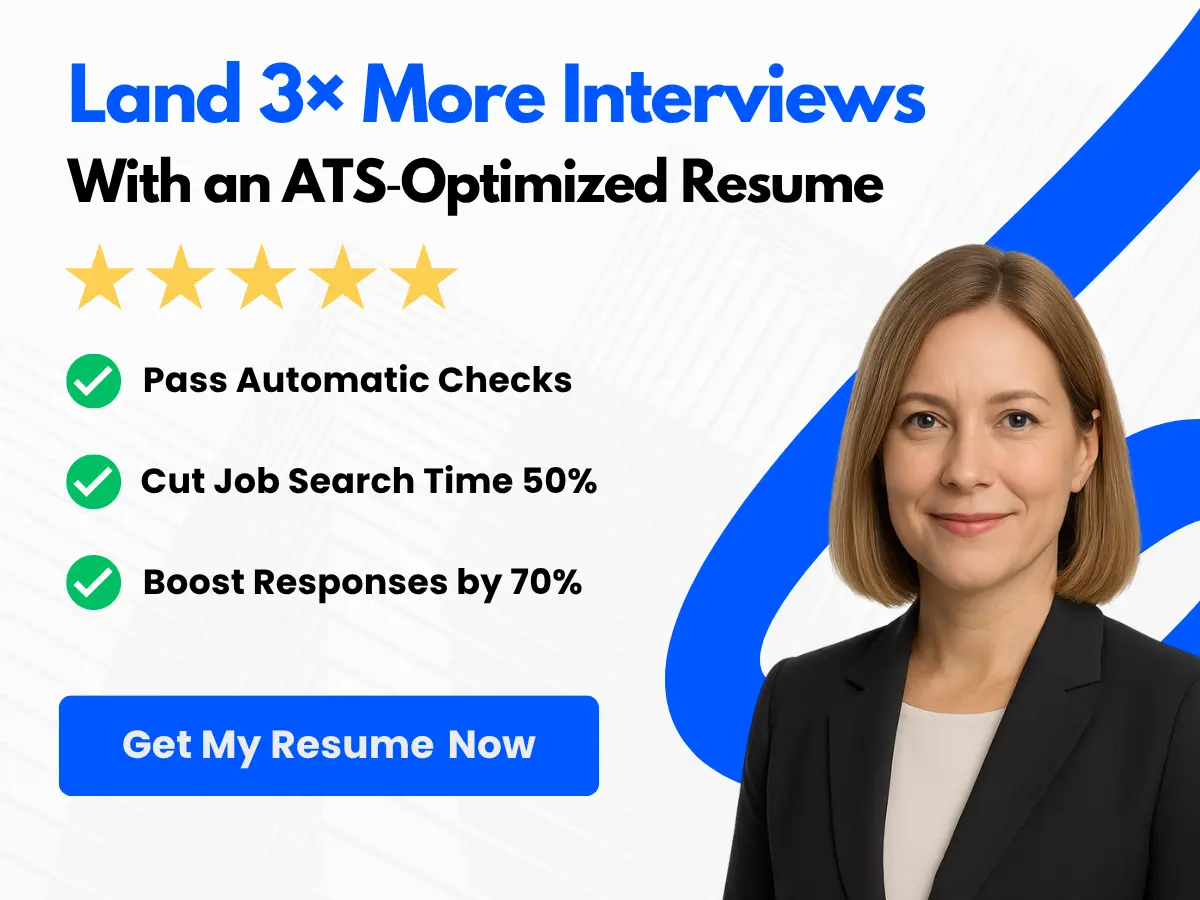A resume is a document that presents your qualifications, work experience, and skills to potential employers. The purpose of a resume is to showcase your professional profile and convince recruiters to invite you for an interview. A well-structured and organized resume can help you stand out in a competitive job market and increase your chances of getting hired.
When it comes to writing a resume, there are a few basic principles to keep in mind to make sure your resume is effective:
-
Tailor your resume to the job you’re applying for. Every company has different requirements and expectations for applicants, so make sure your resume reflects the skills and experiences that are most relevant to the position.
-
Use clear and concise language. Your resume should be easy to read and understand by recruiters, so avoid using complicated jargon or technical terms.
-
Highlight your achievements and contributions. Instead of just listing your job duties, focus on specific achievements and contributions you’ve made in your previous roles that demonstrate your skills and experience.


-
Use bullet points to make information easy to digest. Breaking up information into bullet points makes it easier for recruiters to scan your resume quickly and identify the most important details.
-
Use strong action verbs to describe your responsibilities and achievements. Using action verbs like “created,” “developed,” and “led” can make your resume more dynamic and engaging.
By following these basic principles of resume writing, you can create a strong and effective resume that highlights your qualifications and convinces recruiters to invite you for an interview.
Resume Formats
When it comes to structuring a resume, there are five main formats to choose from: chronological, functional, combination, targeted, and infographic. Each format is different and has its own advantages depending on the job seeker’s experience, skills, and career goals.
A. Chronological Resume
A chronological resume format is the most commonly used and is ideal for job seekers who have steady work experience in the same field. This format focuses on your work history, listing your most recent job first and moving backwards. Chronological resumes are great for highlighting career progression and showing a clear narrative of your professional growth over time.
B. Functional Resume
A functional resume format is perfect for job seekers who have gaps in their work history or are changing career paths. This format focuses on skills and accomplishments rather than work experience, allowing you to showcase your strengths and unique contributions. Functional resumes are great for emphasizing transferable skills and showing that you have the ability to succeed in multiple industries.


C. Combination Resume
A combination resume format is a hybrid of the chronological and functional formats. This format focuses on both work experience and skills, allowing you to showcase your career progression while also highlighting your abilities. This format is ideal for versatile job seekers who want to demonstrate their skills as well as their experience.
D. Targeted Resume
A targeted resume format is tailored for a specific job or industry. This format emphasizes the skills and experience that are most relevant to the position you are applying for. With a targeted resume, you can show the employer exactly what they are looking for, increasing your chances of getting hired.
E. Infographic Resume
An infographic resume format is a visual representation of your work experience, skills, and accomplishments. This format is ideal for job seekers in creative fields such as graphic design, marketing, or art. Infographic resumes allow you to showcase your creativity and stand out from the crowd. However, they may not be suitable for all industries and can be less effective for job seekers with limited work experience.
Choosing the right resume format is essential to standing out as a job seeker. Consider your experience, skills, and career goals to determine which format is right for you. Whether you opt for a traditional chronological format or a creative infographic design, be sure to organize your resume in a way that highlights your strengths and demonstrates your value to potential employers.
Resume Sections
When putting together a resume, it’s important to include certain sections that will highlight your skills and qualifications. Here’s a breakdown of the most common sections found in a resume:


A. Contact Information
This section should include your full name, address, phone number, and email address. Make sure to double-check your email address for accuracy, as this is the primary way that employers will contact you.
B. Professional Summary
The professional summary is a brief overview of your career and should showcase your most relevant skills and experience. This section should be tailored to the job you’re applying for and should entice the reader to keep reading.
C. Objective Statement (optional)
An objective statement is optional and is generally only used by those who are new to the job market or who are changing careers. If you do include an objective statement, make sure it’s tailored to the job you’re applying for.
D. Education
In the education section, list your highest level of education first. Include the name of the school, location, dates attended, and degree earned.
E. Work Experience
This section should include your work history, starting with your most recent job. When formatting this section, be consistent and use bullet points to highlight your accomplishments. Make sure to use action words like “managed,” “developed,” and “implemented” to show your contributions to each role.
i. Format
The format of your work experience section should be consistent throughout your resume. Include the job title, company name, location, dates employed, and your job responsibilities and accomplishments.
Bullets
Using bullet points in your work experience section will make it easier for the hiring manager to skim through your resume. Make sure each bullet point is concise and highlights your accomplishments.


Action Words
Using strong action words in your work experience section will make it stand out to the hiring manager. Use words like “achieved,” “designed,” and “improved” to highlight your accomplishments.
F. Skills Section
The skills section is where you can highlight your technical and soft skills. Be specific when listing technical skills and give examples of how you’ve used them in the past. Soft skills like communication and organization should also be included.
Technical Skills
If the job you’re applying for requires certain technical skills, make sure to highlight them in this section. List software programs you’re proficient in or specific technical skills relevant to the job.
Soft Skills
Soft skills like communication, teamwork, and leadership are important in many jobs. Use this section to highlight your strongest soft skills.
G. Awards and Achievements
If you’ve received any awards or recognition for your work, make sure to include them in this section. This can help set you apart from other candidates.
How to Organize a Resume
Creating a well-structured and effective resume is crucial in landing your dream job. To stand out from the pile of resumes, it is crucial to tailor your resume, focus on job targeting, and highlight your professional achievements effectively. In this section, we’ll delve deeper into the key components of organizing a resume.


A. Tailoring your Resume Customizing your resume to meet the specific job requirements is one of the most effective ways to get your foot in the door. Start by reviewing the job description and highlight the skills that the employer is looking for. Adjust your resume to match those skills and experiences that matter most to the job requirements.
B. Job Targeting Job targeting is all about aligning your skills and experiences with the job description. To write an effective resume, it is essential to research the company and understand what the employer is looking for in a candidate. Be sure to include job-specific keywords that are relevant to the position.
C. Job Descriptions When describing your previous work experiences, be specific about your job duties and responsibilities. Use active verbs to describe the tasks you accomplished in your previous roles. Highlight your significant accomplishments and be sure to provide metrics to quantify your impact.
D. Achievements Your professional achievements are your most significant selling points to the employer. Make sure to highlight specific achievements in your previous roles that demonstrate your expertise and potential value to the company.
E. Grammar and Spelling Be sure to review your resume for grammatical and spelling errors. A well-written and polished resume conveys professionalism and attention to detail.
F. Readability and Appearance A visually attractive resume is more likely to grab the employer’s attention. To ensure readability, use appropriate font sizes and styles. Choose a clean and easy-to-read layout that highlights your key skills and experiences.


G. Review and Revision Finally, make sure to review and revise your resume multiple times. Ask for feedback from friends or colleagues to ensure that your resume is well-structured and effectively communicates your value.
Organizing your resume is crucial to attract the employer’s attention and land your dream job. Tailor your resume to the specific job requirements, highlight your professional achievements, and polish your resume for accuracy and readability. A perfectly crafted resume can make all the difference, so take the time to organize it effectively.
Example Resumes
When it comes to crafting a resume, understanding different resume structures is essential. To help guide you, we’ve provided examples of five common resume formats: chronological, functional, combination, targeted, and infographic.
A. Chronological Resume Example
The chronological resume format is the most traditional approach, and it’s commonly used by job seekers. The focus is on your work history, with each job listed in reverse chronological order. This format works best for those with a consistent work history and a desire to showcase their career progression.
Here’s an example of how you could structure a chronological resume:


- Contact Information
- Objective or Summary Statement
- Work Experience (in reverse chronological order)
- Job Title
- Company Name
- Employment Dates
- Bulleted List of Responsiblities and Achievements
- Education
- Skills
B. Functional Resume Example
The functional resume format shifts the focus from your work history to your skills and abilities. This format works well for individuals who have gaps in their job history, are changing careers, or have unique skills that set them apart from their competition.
Here’s an example of how you could structure a functional resume:
- Contact Information
- Objective or Summary Statement
- Skills (grouped by category)
- Work Experience (listed by company, with minimal detail)
- Education
C. Combination Resume Example
The combination resume format is a blend of the chronological and functional approaches. This format is ideal for those with a varied work history who want to highlight both their skills and relevant work experience.
Here’s an example of how you could structure a combination resume:
- Contact Information
- Objective or Summary Statement
- Skills (grouped by category)
- Work Experience (in reverse chronological order)
- Job Title
- Company Name
- Employment Dates
- Bulleted List of Responsiblities and Achievements
- Education
D. Targeted Resume Example
The targeted resume format focuses on a specific job or industry, highlighting relevant skills and experience. This format is geared toward customized resumes for specific job applications.
Here’s an example of how you could structure a targeted resume:
- Contact Information
- Objective or Summary Statement (tailored to the job posting)
- Skills (specific to the job requirements)
- Work Experience (listed with the most relevant experience first)
- Job Title
- Company Name
- Employment Dates
- Bulleted List of Responsiblities and Achievements
- Education (relevant to the job posting)
E. Infographic Resume Example
The infographic resume format is an eye-catching visual representation of your experience, skills, and achievements. This format works well for creative professionals who want to showcase their work in a unique way.
Mistakes to Avoid
As you prepare your resume, there are certain mistakes you need to avoid in order to make a great first impression. Here are some common mistakes to watch out for:
A. Typos and Spelling Errors
Errors in spelling and grammar can signal sloppiness and lack of attention to detail. Proofread your resume carefully, and if possible, have someone else read it over as well.
B. Lengthy Resumes
Your resume should be concise and focused on your most relevant and impressive accomplishments. Avoid overwhelming employers with unnecessary information or a resume that is overly long.
C. Listing Tasks Instead of Achievements
Employers want to see what you have achieved in your previous roles, not just a list of tasks you performed. Highlight your accomplishments and quantify them wherever possible.
D. Overuse of Technical Jargon
While it is important to showcase your technical skills, overloading your resume with technical jargon can make it difficult for non-technical people to understand. Keep it simple and use only the most relevant technical terms.
E. Lack of Action Words
Using strong action words helps make your accomplishments stand out and highlights the impact you have made in previous roles. Use active verbs and avoid passive language.
F. Failing to Tailor
Every job application is unique, so it is important to tailor your resume to each individual job you apply for. Read the job description carefully and customize your resume to highlight your relevant skills and experience.
Avoid these common mistakes and your resume will have the best chance of standing out and landing you the job you want.
Related Articles
- Writing a Compelling Resume Objective: Tips and Examples
- Portfolio Manager Resume: Winning Examples for 2023
- Wildlife Biologist Job Description: Salary, Skills, & More
- Resume Building: How to Build a Resume in 6 Easy Steps
- Manufacturing Job Titles and Descriptions: A Complete Guide








